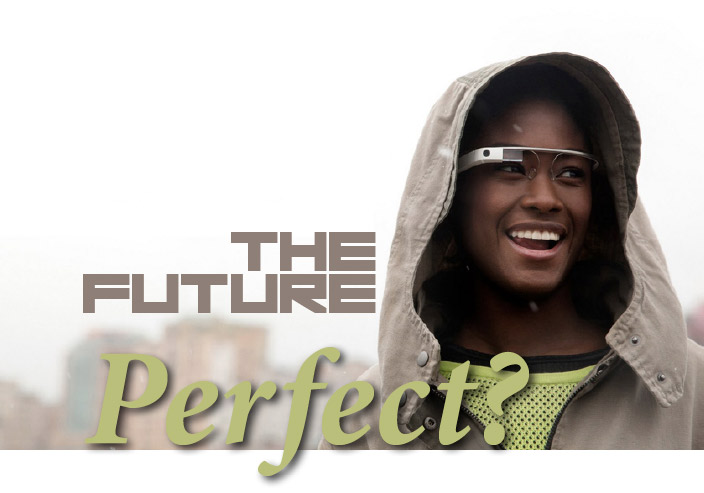By Brian P. Dunleavy
The end of the year is always a good time to make plans, set goals and think about the future.
In this installment of Lens Focus, we’re going to look at where new technology is taking the science of spectacle lens design. If you thought freeform technology revolutionized how your clients see, just check out how these new innovations have taken lenses to the next level.
Watch out, Google. By now, everyone has heard about Google Glass – as well as the product’s promises and pitfalls. Now Sony is entering the rapidly burgeoning “smartglass” market with its new Smart EyeGlass. In essence, the specs act as a secondary screen for an Android-based smartphone, displaying information in the lenses of the wearer, using a tiny projector and hologram system. According to the company, the glasses have a camera mounted in the left-hand lens and use an accelerometer, gyroscope and compass to track the wearer’s movements, overlaying information to create augmented reality. They connect to a smartphone via Bluetooth and Wi-Fi, allowing Android apps to operate through the glasses. Sony plans to launch developer kit versions of the Smart EyeGlass within a year.
Space, the final frontier. Speaking of augmented reality in eyeglasses, Space Glasses also claim to improve on the technology of “smart” eyewear with, its manufacturers claim, 15 times the viewing area of Google Glass. Space Glasses also include audio speakers that add virtual sounds to the user experience, as well as microphones that capture and interpret the user’s spoken commands, using speech recognition technology to respond to requests for desired information and actions. Inventor Dr. Steve Mann has been developing augmented reality systems since the 1980s, through his work at the University of Toronto. In essence, his eyeglass-based technology takes real-world human sensory inputs and enhances them with digital data obtained from the Internet. Dr. Mann is now working as the chief scientist and product developer with Meta Company, which is marketing Space Glasses.
Like the products from Sony and Google, Space Glasses can support prescription lenses, and all three companies plan to work with eyecare providers (optometrists and opticians) in the delivery of their prescription versions.
Then again, who needs glasses? An important market segment for ECPs – computer users – may no longer need eye care services or the premium lens products designed to meet their unique vision needs. Brian Barsky, OD, a professor of computer science and vision science (and affiliate professor of optometry) at the University of California-Berkeley, and researchers from the Massachusetts Institute of Technology (MIT) have developed computer hardware and software improvements designed to achieve increased image resolution and contrast. In one of their projects, they modified an iPod touchscreen by adding a standard light field display consisting of a film with tiny pinholes sandwiched between thin layers of plastic. The team also developed computer algorithms to adjust the light intensity from each pinhole. With this technology, they can use a person’s eyeglass prescription to compute an altered image customized for that individual. Their findings were published recently in the journal ACM Transactions on Graphics.
Lens, heal thyself. Historically, eyeglass wearers – particularly those with lenses made from certain materials and/or treated with certain coatings – experienced issues with durability. Although newer lens products are less problematic in this regard, there is room for improvement. Enter Essilor. They have filed an application with the U.S. patent office for a lens treatment that effectively self-repairs when scratched. Essilor would not comment on the patent application – except to confirm its existence – as the product is still in development.
The products mentioned above may not come up in your client consultations next month or even next year. But they’re definitely worth keeping an eye on for the future.









